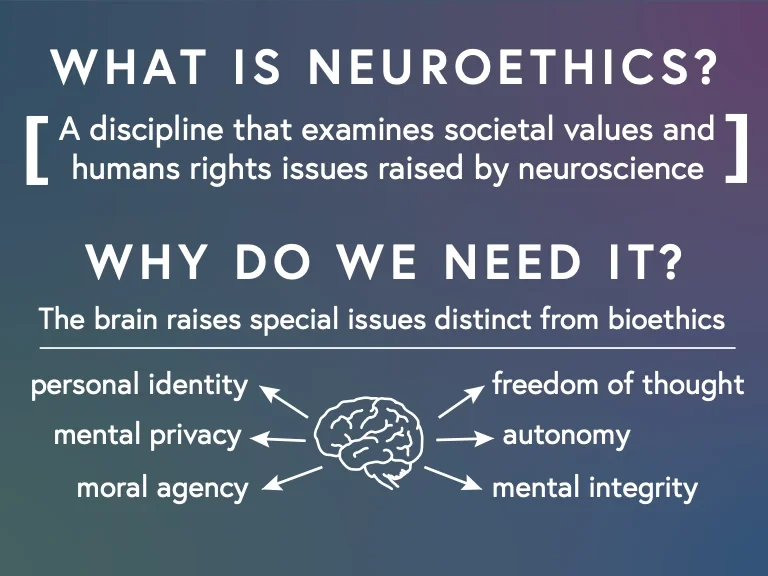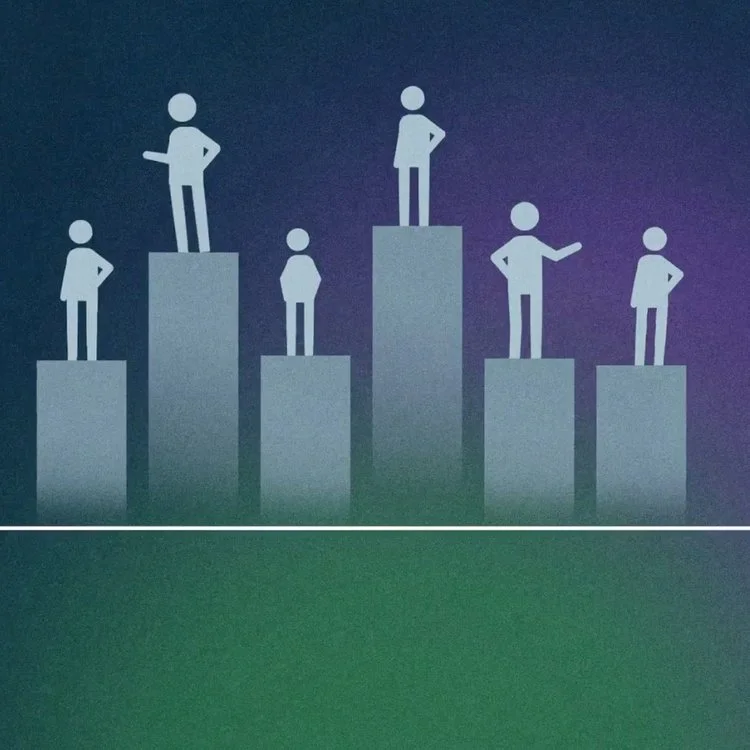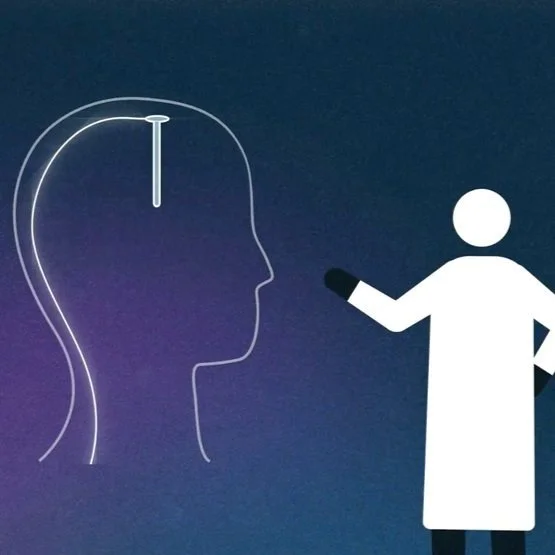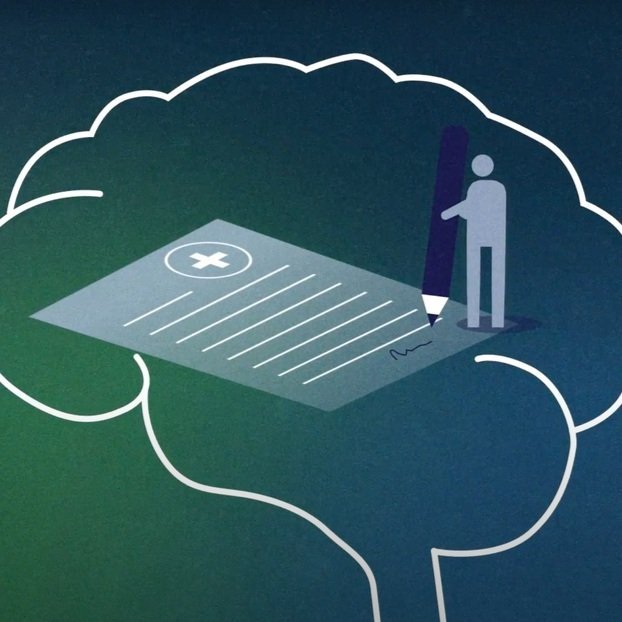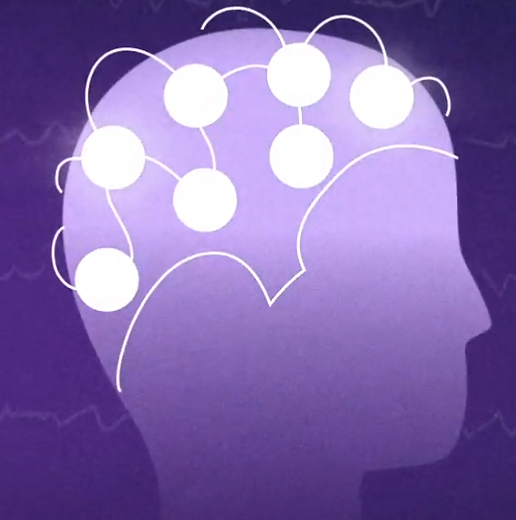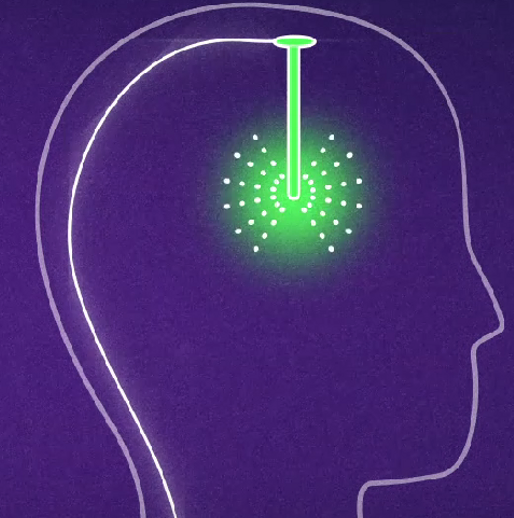
Sponsored by BrainMind
Neuroethics Crash Course
How do we define Neuroethics?
Neuroethics is the study of the ethical, legal, and social implications of neuroscience. It investigates the impact of advances in neuroscience on society and how we can use this knowledge for the greater good.
Understanding Neuroethics provides a compass for navigating the ethical implications of advancing brain science. It ensures responsible decision-making, safeguarding ethical principles in a rapidly evolving field that directly impacts individuals and society. Learn more below.
Click above to view BrainMind’s Neuroethics Infographic
Neuroethics Explained - Courtesy of BrainMind
What is the difference between Neuroethics and other ethical frameworks?
Neuroscience presents unique challenges that may not be adequately addressed by broader ethical frameworks. The intricacies of studying and manipulating the brain raise distinct ethical questions surrounding the nature of consciousness, personal identity, and free will that require specialized consideration. Neuroethics is interdisciplinary, involving biology, philosophy, psychology, law, and other disciplines. It recognizes the need for a multidisciplinary approach to address the ethical issues arising from our expanding knowledge and capabilities in neuroscience. Learn more about the distinction in this video.
Seven Key Areas of Neuroethics
Equity and Access
How do we democratize access to brain-based therapeutics?
Equity and justice concern the importance of ensuring everyone has fair opportunity to access and benefit from neurotechnologies and brain interventions, regardless of factors including age, gender, race, and socioeconomic status. The benefits of neurotechnologies ought not be limited to a small number of privileged individuals, rather the goal should be to be able to offer them to those who would benefit from them.
Dual or Intended Use
How can we anticipate potential harmful uses of a technology?
There is often the potential for neurotechnologies and brain interventions to be used for purposes other than their original intended use. This could have beneficial or harmful outcomes—it is critical that these applications be proactively addressed to minimize potential harms and maximize beneficial outcomes.
Agency and Autonomy
How will brain technologies affect our sense of self and our free will?
Privacy of data is a concern common in use of many different technologies including artificial intelligence (AI), social networks, and the internet, however the involvement of neural data poses a novel problem for privacy. Use of neurotechnology risks unauthorized access to patients’ internal mental processes and the collection, analysis, and use of their brain data. This data may contain highly private information, could be used to identify an individual and even to discriminate against them based on their mental health or apparent neurological predispositions.
Safety and Patient Protection
How do we ensure the physical, psychological, and emotional safety of patients and users?
When applying neuroscience-based medical treatments, neurotechnologies and other brain interventions it is crucial that the well-being and safety of users is prioritized. Potential risks and harms to participants in research, patients and other users should be minimized—this is often done by adhering to strict safety standards and protocols. Safeguarding the autonomy, rights, and privacy of individuals will ensure their protection and that all involved in research and treatments are treated with respect, dignity, and fairness.
Privacy
Who has the right to use brain data & how it can be used?
Privacy of data is a concern common in use of many different technologies including artificial intelligence (AI), social networks, and the internet, however the involvement of neural data poses a novel problem for privacy. Use of neurotechnology risks unauthorized access to patients’ internal mental processes and the collection, analysis, and use of their brain data. This data may contain highly private information, could be used to identify an individual and even to discriminate against them based on their mental health or apparent neurological predispositions.
Capacity and Consent
How can we ensure neurotechnology users are fully aware of the implications of use?
Capacity and consent concern the ability of individuals to make informed decisions about their participation in neuroscience research or use of neurotechnology and neuroscience for treatments and other brain interventions. The capacity of individuals to make informed decisions must be considered to determine whether they have the cognitive abilities to make decisions about treatments or provide consent. Consent refers to the voluntary and informed agreement given by an individual to participate in research, undergo a medical treatment or neurotechnological intervention.
Public Engagement
Raising awareness and engaging the public in neuroethics issues

TODAY’S TECHNOLOGIES
What are the implications of Neuroethics?
Brain technologies are advancing at remarkable speed, creating valuable progress in the care of those with Parkinson’s, depression, PTSD, and more. But as we unravel the mysteries of the brain and begin treating brain disorders with neurotechnologies, navigating these ethical considerations becomes crucial for responsible innovation and respectful engagement with cognitive complexities:
A neural implant can reduce the symptoms of people with Parkinson's
An EEG headset can help people measure their level of focus
Psychedelic therapies can aid those with depression and PTSD
Though the possibility to help those with neurological disorders is extremely beneficial, there are many questions and problems that arise with such rapid advancements. Most notably, the pacing problem.
The Pacing Problem
The pacing problem describes the occurrence in which neurotechnology is moving faster than regulation and political change—it is essential to offer more guidance to those involved in the development of neurotechnology to ensure ethical progress.
The pacing problem leads to other questions surrounding rapid technological advancements: should companies be allowed to collect brain data gathered from these technologies and sell it? What if these technologies were not only used to help those with neurological conditions but as neurological enhancements for the general population? Who should be able to access these technologies? It is essential to ask what may happen if brain technologies are used without thinking of their possible consequences and use the framework of Neuroethics to address these questions.
